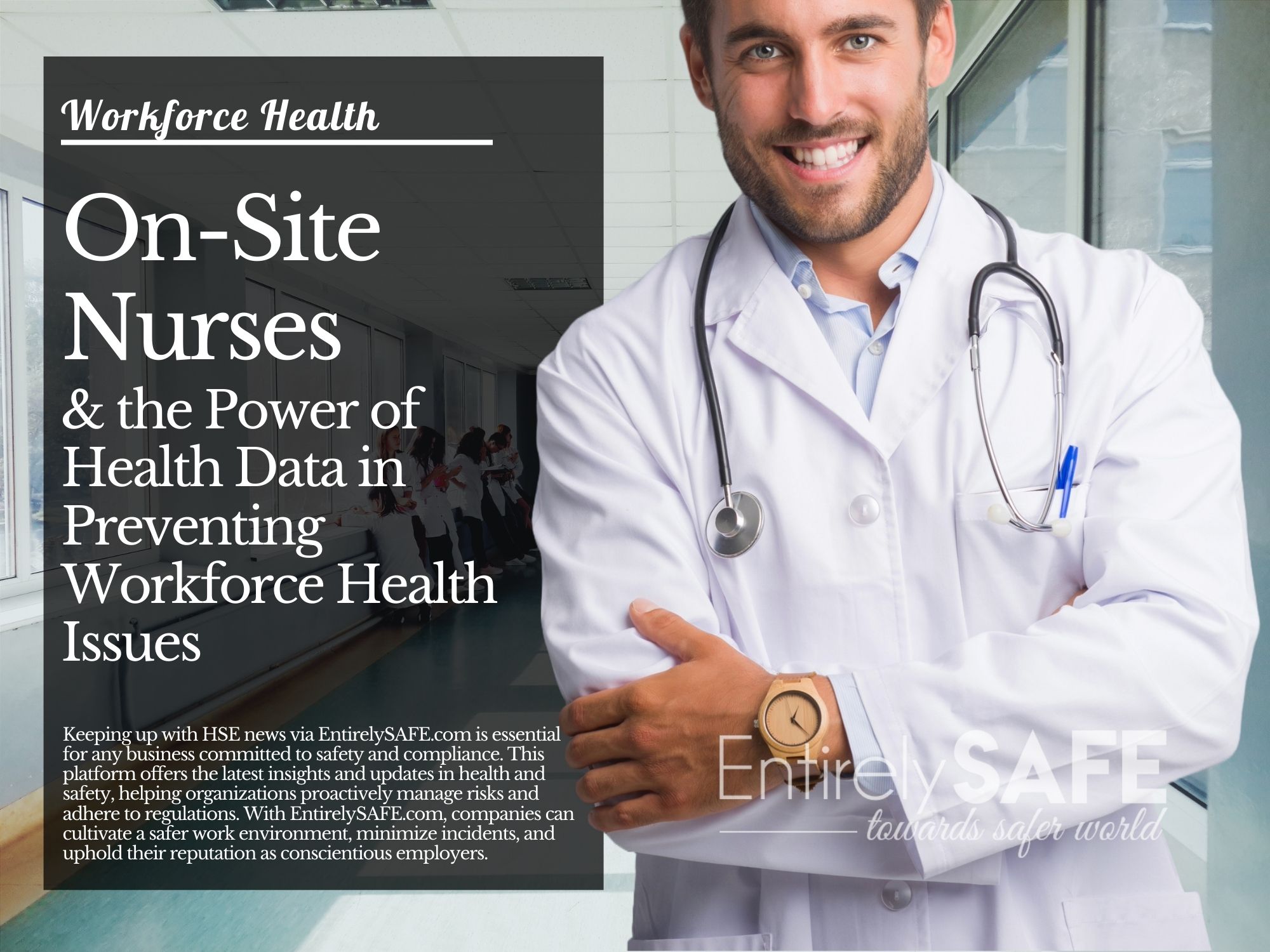On-site Nurses and the Power of Data in Preventing Workforce Health Issues

In the realm of workplace health and safety, the presence of on-site nurses has become increasingly recognized as a critical component of an effective health and safety program. On-site nurses play a pivotal role in providing immediate medical care, conducting health assessments, and advising on preventive measures to ensure a healthy workforce. However, the integration of health management software can significantly amplify the impact of on-site nurses by streamlining the capture and analysis of health complaints, thereby enhancing the overall well-being of employees.
The Critical Need for On-site Nurses
According to the Occupational Safety and Health Administration (OSHA), millions of work-related injuries and illnesses are reported annually. While exact statistics can vary by industry and job type, OSHA’s emphasis on workplace health and safety highlights a universal need: proactive measures are essential to prevent and manage health issues within the workforce. On-site nurses are at the forefront of this effort, offering a first line of defense against health problems that could otherwise escalate into more serious conditions, potentially leading to significant absenteeism and reduced productivity.
OSHA’s guidelines emphasize the importance of having trained first aid personnel on-site, especially in environments where an infirmary, clinic, or hospital is not in close proximity to the workplace. Specifically, for general industry, OSHA standard 29 CFR 1910.151(b) states that if there isn’t an infirmary, clinic, or hospital near the workplace for treating all injured employees, then the employer must ensure that a person or persons are adequately trained to render first aid, and that adequate first aid supplies are readily available. For the construction industry, the standard 29 CFR 1926.50(c) outlines a similar requirement, highlighting the necessity of having a person with valid first-aid training available at the worksite in the absence of nearby medical facilities.
While OSHA recommends having employees trained and certified in first aid, including CPR, it doesn’t mandate it for every workplace. However, it suggests that having one or more employees trained in these areas is a low-cost and effective way to ensure employee safety and compliance with OSHA standards. The decision to have on-site first aid trained personnel versus relying on the proximity of external medical services depends on the employer’s assessment of their specific workplace needs and the feasibility of accessing emergency medical services within a reasonable timeframe.
Legislative Backing for Health Support
OSHA and other health and safety legislation often outline specific requirements for health services based on the size and risk profile of the workforce. For instance, certain regulations mandate the availability of nursing staff per every set number of employees, especially in industries where workers are at a higher risk of injury or illness. These regulations underscore the importance of having qualified health professionals accessible to address immediate health concerns and to implement preventive health programs.
The Synergy with Health Management Software
While on-site nurses play a crucial role in direct health management, integrating their efforts with specialized health management software like Papka.io can bring about transformative benefits. This software acts as a central repository for recording, tracking, and analyzing health complaints and interventions. By capturing the complaints and observations made by on-site nurses, the software enables:
- Data-Driven Decisions: Analyzing trends from the data collected helps in identifying common health issues, potential workplace hazards, and the effectiveness of current health policies. This insight is invaluable for making informed decisions to improve workplace health strategies.
- Preventive Action: With detailed records and analysis, organizations can move from reactive to proactive health management. Identifying patterns in health complaints allows for the implementation of targeted preventive measures, reducing the occurrence of certain health issues.
- Compliance and Reporting: Health management software simplifies compliance with health and safety regulations by efficiently managing and reporting health data. This not only helps in meeting legal requirements but also in demonstrating a commitment to employee well-being.
- Enhanced Employee Engagement: The software facilitates transparent communication between employees and health management, encouraging employees to participate actively in their health and safety. Knowing that their health concerns are promptly addressed fosters a culture of trust and care within the organization.
Conclusion
Integrating on-site nurses with advanced health management software represents a holistic approach to enhancing workforce health and safety. The synergy between professional healthcare personnel and innovative technology solutions like Papka.io – Online HSE Software, exemplifies a forward-thinking strategy for ensuring employee well-being. By leveraging Papka.io‘s capabilities to systematically record, analyze, and act on health data, organizations can better identify trends, implement preventive measures, and comply with regulatory standards. This not only underscores the critical role of on-site medical professionals in immediate health management but also utilizes digital tools to safeguard long-term employee health across various industries. Papka.io empowers businesses to adopt a proactive stance in health and safety management, ensuring a healthier, safer, and more productive workplace for all.

